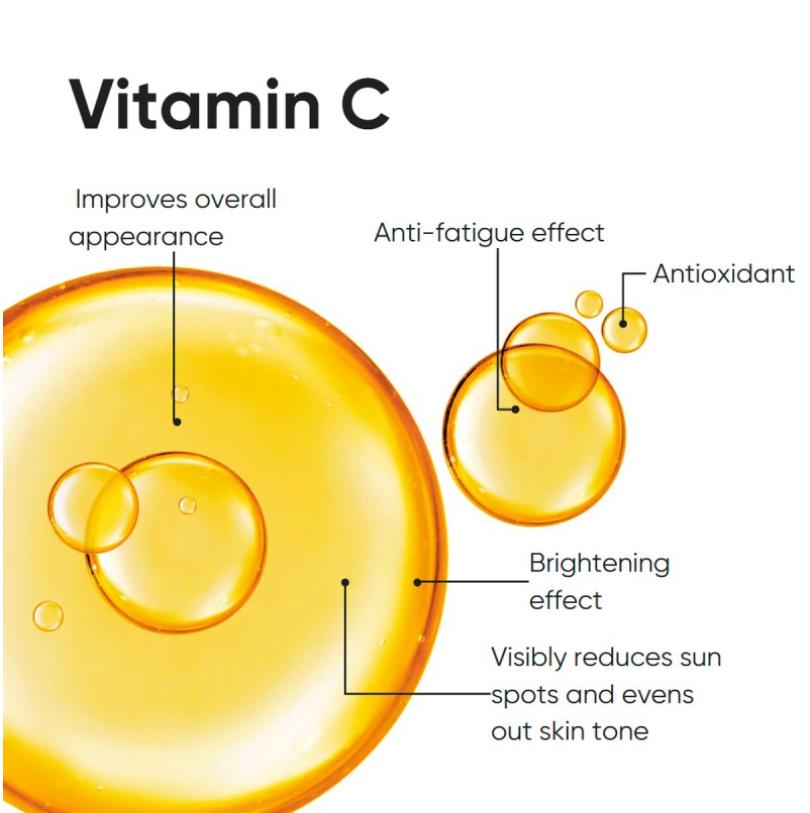✨Welcome, skincare enthusiasts! ✨
Whether you’re a skincare newbie or a seasoned pro, Vitamin C is likely a name you’ve heard buzzing around the beauty world. Today, we’re diving into the ultimate guide to Vitamin C 20%—a potent skincare superhero that’s been stealing the spotlight. Ready to decode the magic behind this powerhouse? Let’s go!
🌟 What is Vitamin C in Skincare?
Vitamin C is a water-soluble vitamin that plays a vital role in skin health. Here’s the quick lowdown:
- Known as ascorbic acid, it’s a go-to ingredient for glowing, youthful skin.
- L-ascorbic acid is the most researched and effective form used in skincare.
- The 20% concentration is considered highly potent, delivering maximum benefits.
- Fun fact: Unlike some other vitamins, our bodies don’t naturally produce Vitamin C—so we need to get it from external sources like skincare products.
🔬 The Science Behind Vitamin C 20%
1. Antioxidant Properties
Vitamin C is a powerful antioxidant that:
- Neutralizes free radicals—unstable molecules that damage skin cells.
- Prevents premature aging caused by UV rays, pollution, and other environmental stressors.
2. Collagen Synthesis
Collagen is the secret to firm, youthful skin, and Vitamin C helps by:
- Activating enzymes that stabilize collagen molecules.
- Boosting collagen production for firmer, more elastic skin.
3. Tyrosinase Inhibition
Vitamin C works wonders for an even skin tone by:
- Inhibiting tyrosinase, the enzyme responsible for melanin production.
- Reducing hyperpigmentation and brightening your complexion.
4. Enhancing Sun Protection
While Vitamin C isn’t a sunscreen, it:
- Boosts your skin's defense against UV damage.
- Works synergistically with SPF for enhanced protection.
5. Anti-Inflammatory Effects
If you’re dealing with redness or acne, Vitamin C can help by:
- Reducing skin inflammation.
- Soothing irritated skin for a calmer complexion.
🤔 Why Choose 20% Concentration?
Not all Vitamin C products are created equal. Here’s why 20% is a game-changer:
- Studies show that 10-20% concentrations are the sweet spot for effectiveness.
- At 20%, you get maximum benefits without significantly increasing the risk of irritation.
- Higher concentrations don’t always mean better results—they can actually lead to sensitivity, so remember to patch test yourself, and build uyour concentration up to not overpower your skin.
🛠️ How to Incorporate Vitamin C 20% Into Your Routine
- When to Use It:
- Apply in the morning after cleansing and before moisturizer and SPF.
- Start Slowly:
- New to Vitamin C? Begin with a lower concentration and gradually work your way up.
- Storage Tips:
- Store your Vitamin C product in a cool, dark place to prevent oxidation.
- Look for packaging like opaque, airless pumps to maintain stability.
⚠️ Potential Side Effects
While Vitamin C is generally safe, here are some things to keep in mind:
- You might experience mild irritation or redness, especially if you have sensitive skin.
- Always patch test new products before applying them to your face.
🧪 Vitamin C’s Best Friends
Pairing Vitamin C with the right ingredients can supercharge its effects:
- Vitamin E + Ferulic Acid: Enhance stability and boost efficacy.
- Hyaluronic Acid: Adds hydration and complements Vitamin C beautifully.
- Caution: Avoid using Vitamin C with retinoids or AHAs/BHAs at the same time—alternate usage for best results. (aka when you exfoliate [2-3 times per week] do not use vitamin c the same day, use them on the alternate days.
⏳ Patience Pays Off
Consistency is key! It can take several weeks to see noticeable results, so stick with it. For personalized advice, consult with a skincare professional who can tailor recommendations to your unique skin needs.

